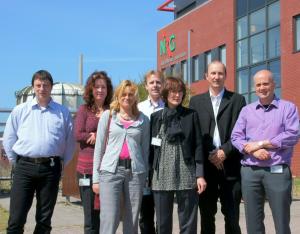Identifying possible areas of support
The ITER Hot Cell Team recently visited the Nuclear Research & Consultancy Group (_Ho_http://www.nrg.eu/_HoX_NRG_Hx_) in Petten, the Netherlands in order to explore possible common activities in support of the ITER Hot Cell.
Petten is the location of the High Flux Reactor and associated Hot Cell Laboratories, which have been serving the European fusion program for many decades and ITER for several years. A new reactor called Pallas is in the planning stages which will guarantee the production of medical isotopes and the continuation of nuclear research in the future. NRG is one of the two research units of the Euratom-FOM (Fundamental Research on Matter) association.



